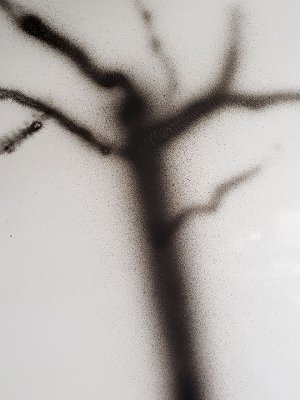In the photo I notice a few things.
The trunk of the tree is set in one line
And at the branches there are some spiders.
Judging by the oversspray, your paint is also too thick, or the pressure is too low.
In this case, the spiders are not caused by too thin paint, but too much paint.
If you dilute the paint, you will also have to give less paint.
This goes along with the pressure and the spray distance.
The pressure must be high enough to atomize the paint in a fine mist.
The thinner the paint, the less pressure you need.
And the greater you distance from the surface, the more paint you can apply.
If you want to make a thin line, you have thin paint and little pressure, close to your surface.
And you give very little paint.
You now have a nice thin line that is much too light.
Which has to go over several times (slowly build up) to get it dark enough.
This way you have more control over the lines and they are tighter than putting them in one go.
Which of course can also be done by keeping the paint thicker and increasing the pressure.
You can tighten the tree trunk by making a gradient from 2 sides.
You start with a line put a line next to it with 50% overlap with each line you increase the spray distance.
To the middle of the trunk and do the same from the other side.
Hope it helps.

